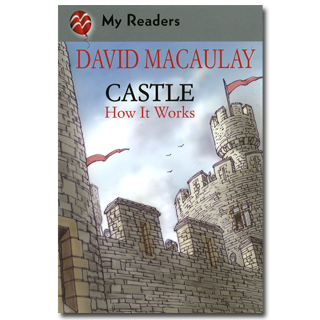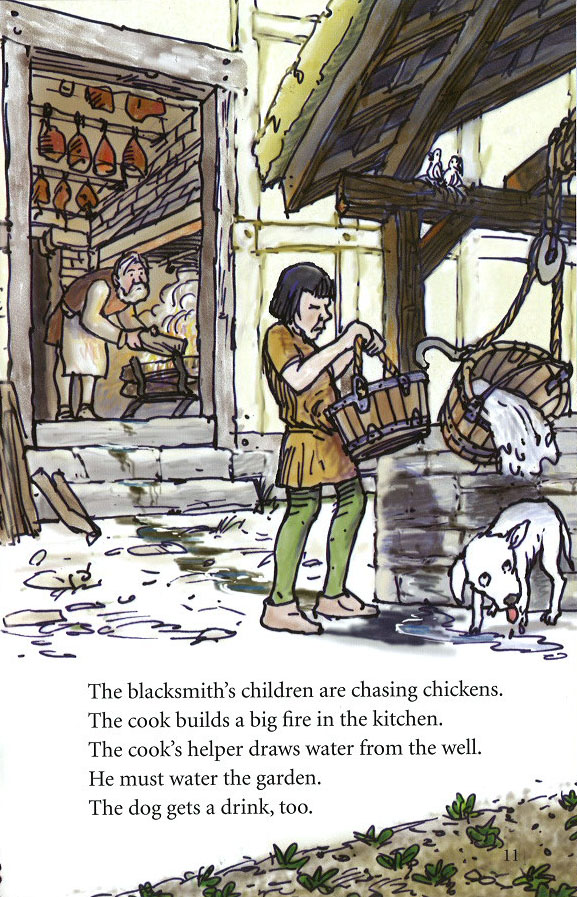
A FEW OTHER EVENTS FOR
OCTOBER 25:
- It’s the birth date of Stephanie S. Tolan (Surviving the Applewhites ), Carolyn Sherwin Bailey (1875–1961), Miss Hickory , Fred Marcellino (1938–2001), Puss in Boots , and Hardy Boys ghostwriter Leslie McFarlane (1902–1977), pseudonym Franklin W. Dixon.
- It’s time for spaghetti silliness and macaroni mayhem on World Pasta Day. Read The Story of Noodles by Ying Chang Compestine and YoungShen Xuan, and Pino and the Signora’s Pasta by Janet Pedersen.
Today marks the death date of Chaucer, the birthdate of English historian Thomas Macaulay, and the Battle of Agincourt in 1415, when the English defeated the French. When I looked at those three events, a new beginning reader comes to mind: David Macaulay’s Castle: How It Works.
Good beginning readers with historical or informational content are hard to come by. Hence I was delighted to see that David Macaulay is using his nonfiction talents to create a My Readers Series of books for children ages four through ten. Macaulay’s motivation for his quest to provide the best nonfiction books for children can be found in these two sentences: “When I was a kid I did not like to read. But if a book had pictures, I would try to read it.” And so as an adult David Macaulay has used words and pictures to tell a story; he has drawn on children’s natural visual literacy to move them to verbal literacy.
Just as he demonstrated in his popular and bestselling works for slighter older readers, Macaulay has a sure sense of his audience. Readers learn that no welcome mat graces the castle—a fortress built to keep people safe inside and foes outside. He then deftly moves to the ramps and guards, the cooks and blacksmiths, the lords, ladies, and chapel. He also shows us the bathroom system, and how knights have to use hay for toilet paper. These are, after all, the questions children really want answered.
Then David shows a siege to the castle, including battering rams and a catapult with flying pigs. All is well that ends well, with a celebration that contains eel pie. Architectural cutaways show various levels of the buildings and details about how rainwater eventually arrives at the kitchen. David Macaulay has always been a sneaky author. He teaches his audience important details all the time, while making reading so much fun. But a glossary, bibliography, and index also make the book useful for research.
In this book as in his others David Macaulay makes architectural structures understandable because he demonstrates their effect on people. So on the hillside, as the castle lay under siege, dogs loll about and chew on bones; children chase chickens inside the castle. Consequently the reader experiences life in a castle much as the medieval inhabitants might have.
If you are hunting for exciting nonfiction for young readers, pick up this book. I can’t wait to read the rest of the series. Maybe after I look at Jet Plane, the second book in the series, I will finally understand how these great airplanes work. Certainly everything that I know about structures and architecture, I have learned from David Macaulay over the years.
Here’s a page from Castle:
Originally posted October 25, 2012. Updated for 2024.














Don’t you love that dog’s face?
Helen: Absolutely. A really doggy dog.